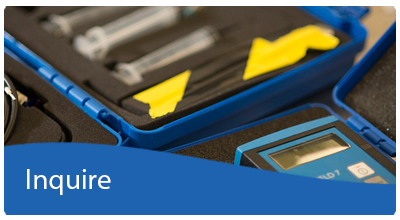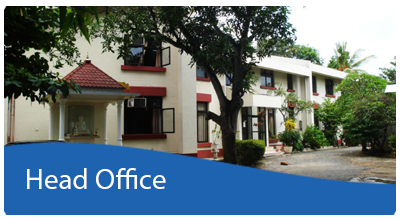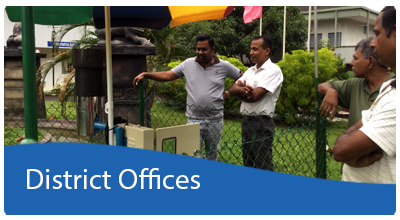Historical Background
With accelerated development in early 1980s the necessity arose in industry for committed R & D work and improved technical consultancy and testing services. Rigid procedures with government service providers prevented delivery of such services to the quality and speed demanded, and as a result, the need was felt for the formation of a new institution to perform such tasks for a fee and deliver fast and quality services.
State Engineering Corporation had a “Laboratory for Research” set at present NBRO premises known at that time as ‘Site 676’ that had some facilities for testing building materials. Later, this laboratory was converted to Buildings Research Institute (BRI) in the period 1976-78, instrumented by late Vidya Jyothi Dr. A. N. S. Kulasinghe. Buildings Department had a soil testing laboratory at Colombo Fort and with the guidance of Dr. Kalyan Ray, the testing equipment from the soil testing laboratory were brought to BRI to form a new institution in 1983. After a certain delay, the National Building Research Organisation (NBRO) was formed as a separate establishment on 5th March 1984.
NBRO was first established under the Ministry of Policy Planning & Implementation. In the past 32 years, NBRO served under many ministries, as it was moved from one line ministry to another, far too frequently. This resulted NBRO to change its direction often, made to assume different roles and affected the institutional performance. In spite of all the difficulties arose from ministerial changes, NBRO turned the challenges to its advantage, served in many important national development projects in the country, thereby learning newer technologies, expanding its scope of work and more importantly, acquiring the remarkable adaptability of NBRO to change.
Over the past 32 years NBRO developed its capacity to become a competent research & development institution and a reputed technical service provider in Sri Lanka. NBRO became specialized in many areas such as geotechnical engineering, landslide studies, project management, human settlements planning, water quality surveillance, air quality monitoring, building materials research and testing. Because NBRO was selected in 1985 as an authorised institution for landslide related studies and services, it was imperative that NBRO venture deep into the field of Disaster Management. NBRO has investigated and assessed landslide risks since 1986 and implemented the Landslide Hazard Zonation Mapping Project since 1992. Further, NBRO compiled Disaster Preparedness Plans for Sri Lanka, organised disaster management related conferences in 1984 and 1992, studied incidents of ground subsidence and implemented landslide mitigation projects. Considering these, NBRO was placed under the purview of Ministry of Disaster Management in 2007.
NBRO Today
After 32 years of self-development since the inception and after having many national duties and responsibilities assigned to it, NBRO stands today as a premier institute in the country, reputed for its work related to landslide risk management, research & development and provision of technical consultancy and testing services. Coupled with its outstanding performance, NBRO stands out as a financially stable and very progressive government institution in the country.
NBRO now has over a staff of 350 out of which 138 are graduates qualified in various related disciplines such as engineering, geology, science, architecture, and town planning etc. NBRO provides landslide risk management services through the head office and its ten district offices located in landslide-vulnerable districts in the country. Technical divisions conduct research and development work, carries out cutting-edge technical consultancies and provides testing services using its modern laboratory facilities and advanced field equipment.
NBRO is the designated national focal point for landslide risk management in Sri Lanka. Hence as its responsibilities, NBRO carries out landslide related studies, investigations, mapping, monitoring, early warning and mitigation work and in addition, provides a unique service of issuing Landslide Risk Assessment Reports as a pre-requisite for approving building permits and development plans. NBRO’s expertise extends into a wide range of disciplines such as environmental management, human settlements planning, engineering project management, geotechnical engineering, and building materials engineering also.
Furthermore, NBRO heavily relies on self-earning and most of its income is generated through consultancy & testing services offered to the state and the private sector.
Functions of NBRO
- Engage in applied research and development work related to disaster risk reduction and safe built environment
- Play the role as the national focal point for landslides and geo-hazards
- Carry out research and provide guidelines on planning and development of sustainable housing and safe human settlements in disaster-prone areas and in areas endangered with climatically varying conditions
- Carry out research & development activities on the utilization of areas with technologically problematic soils
- Improve alternative sources of building materials, products and technologies
- Provide standard reports on buildings and construction, damage assessment and technical solutions
- Provide information, educational programmes, training and technological services by specialized resource persons
- Undertake testing and consultancy assignments and conducting research projects on geology, geo-technical engineering , building materials, structural engineering and building services, project management, environmental management, human settlements planning and in areas relevant to carrying out the objectives of the organisation.
An Interim Management Committee with the Secretary of the Ministry of Disaster Management administrates and guides the functioning of NBRO. Corporate Plans and Annual Action Plans of NBRO are made annually as guides of performance. Annual Reports of NBRO are presented to apprise authorities of institutional achievements.































